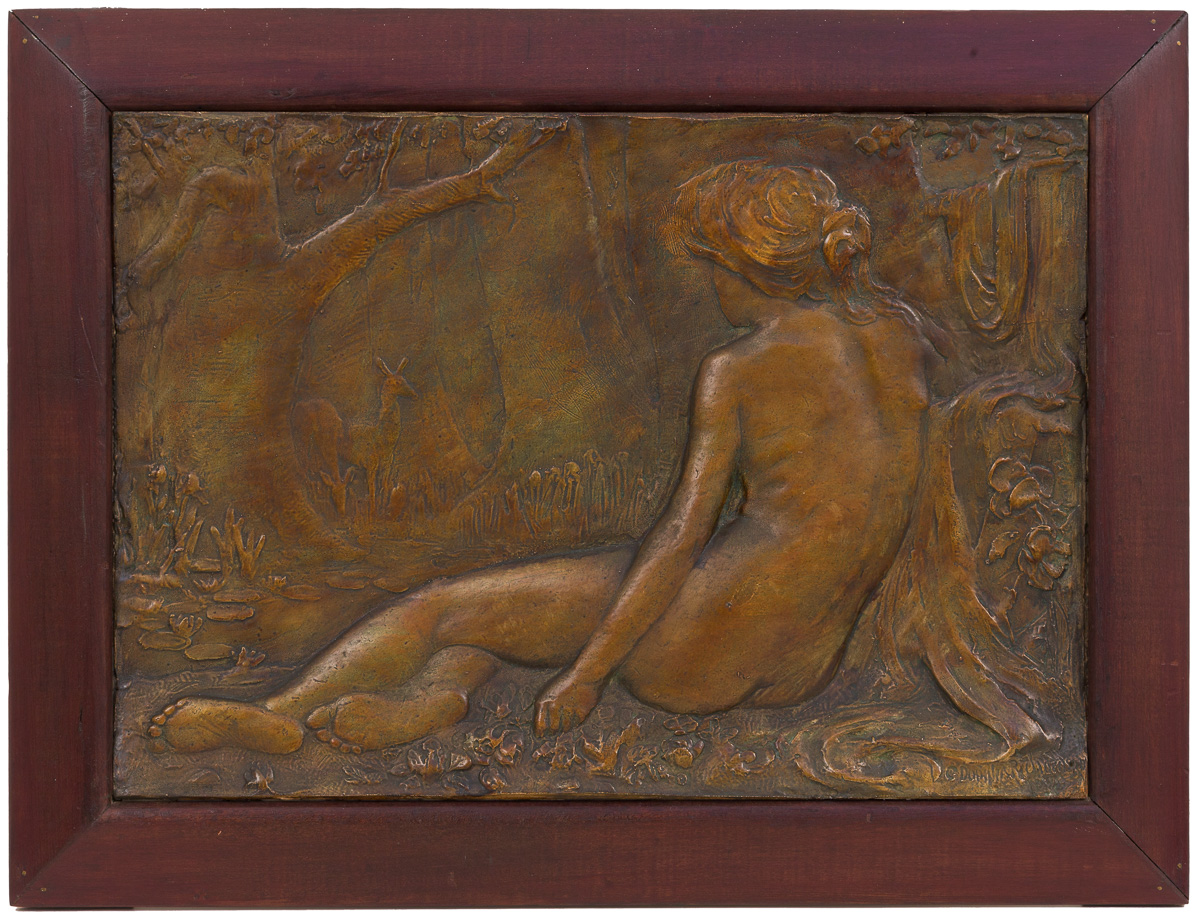The Bather also known as The Nymph
Charles Douglas Richardson

Details
- Artist
- Charles Douglas Richardson
- Title
- The Bather also known as The Nymph
- Year
- 1898
- Medium
- bronze painted plaster bas-relief
- Size
- 36 x 51.5 cm
- Details
Please inquire with the Gallery regarding the availability of this artwork.
Exhibited
Yarra Sculptors Society inaugural exhibition, Melbourne, 1898, as The Bather
Australian Federal International Exhibition, Melbourne, 1902-03, as The Nymph
Further Information
This bas relief is of great significance, as relatively few of Richardson’s imaginative sculptural works reflecting the British New Sculpture movement have appeared on the Australian art market.
Radical and progressive elements in terms of late nineteenth century sculpture can be identified in the relative low level of relief modelling, especially in the background, and the appearance of decorative whiplash art nouveau curves in many of the modelled details. This appealing and graceful relief was produced during a high point of Richardson’s career when he established, with friends and pupils, the Yarra Sculptors Society that held a number of exhibitions from 1898 to 1911. Shown at the Yarra Sculptors Society inaugural exhibition July 1898, in Richardson’s studio 167 Collins Street Melbourne, it is clearly illustrated in the catalogue and named as The Bather, although it does not appear in the actual listing of works under that title. It appears as The Nymph – design for panel to be carved in wood, the only relief by Richardson listed in the catalogue, as no. 117.
The bas relief is typical of Richardson’s works in that many of his mythological female figures were benign and gentle nature spirits, exemplified by his best known work The Cloud, 1901, editioned as a plaster cast and held in various public collections.¹
A number of surviving and lost works by Richardson depict both modern day swimmers and allegorical sea creatures.² A related plaster relief signed by Richardson shows a similar seated nude by the sea, but with a veiled face. Both works are drawn from Ingres’ famous Grande Odalisque.³
Juliette Peers
¹. His preference for depicting the minor nature spirits of classical mythology is shared with other Australian sculptors of the turn of the century, Web Gilbert and Margaret Baskerville, whereas Bertram Mackennal showed a greater interest in dramatic femme fatales such as Circe, Rahab and Salome.
². including paintings of Mermaids, 1890 and Nereid, 1892, and sculptures By the Sea Shore, 1893; e Young Bather, 1898; His First Fish, 1901; e Siren, 1902; A Seaside Vision, 1902 (formerly Joseph Brown Collection); On the Rocks, 1905; Neptune, 1906; e Crest of the Wave, 1910.
³. Richardson was himself a keen swimmer, who apparently would brave Port Phillip Bay during a Melbourne July. His immediate family were closely involved in the early years of competitive swimming in Victoria, notably his brother Frank G. Richardson, and his niece and nephew, Trevor and Marjorie Richardson, who were friends and early competitors with the future brother and sister Olympians Frank and Lily Beaurepaire, and were themselves swimming champions at a state level. Trevor and Marjorie also posed as models for Richardson.
